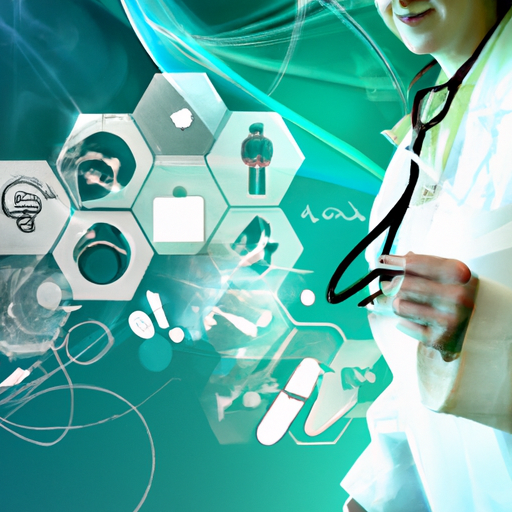Understanding Health Information Technology
Health Information Technology (HIT) is transforming the way healthcare is delivered and managed.
With advancements in technology, the healthcare sector is witnessing a significant shift towards digitalization.
But what exactly does HIT entail, and how is it reshaping our healthcare systems?
In this blog post, we’ll delve into various aspects of Health Information Technology, exploring its impact, benefits, and future potential.
The Basics Of Health Information Technology
Health Information Technology refers to the use of computers, software, and electronic systems to manage health information and deliver healthcare services.
It encompasses a broad range of technologies including Electronic Health Records (EHRs), telemedicine platforms, and mobile health applications.
These technologies streamline processes for healthcare providers and improve patient outcomes.
For instance, EHRs allow doctors to access patient histories quickly and accurately.
This immediate access can be lifesaving in emergencies where every second counts.
Additionally, HIT systems facilitate better communication between different healthcare providers ensuring that all are on the same page regarding a patient’s care plan.
The Impact Of Health Information Technology On Patient Care
One of the most profound impacts of Health Information Technology is on patient care.
With accurate data storage and retrieval mechanisms in place, errors due to miscommunication or lost records are significantly reduced.
Patients receive more personalized care as their complete medical histories are accessible at any point of care.
Imagine a scenario where a patient with multiple chronic conditions visits several specialists.
Without an integrated HIT system, each specialist might lack comprehensive information about the patient’s overall health status leading to fragmented care.
However, with HIT in place, all specialists can access detailed records ensuring cohesive treatment plans.
Moreover, telemedicine has become increasingly popular thanks to advances in HIT.
Patients can now consult with their doctors remotely through video calls or mobile apps reducing the need for physical visits especially during times like pandemics when social distancing is essential.
Efficiency And Cost-Effectiveness In Healthcare Systems
Beyond improving patient outcomes Health Information Technology also enhances efficiency within healthcare systems making them more cost-effective.
Automated processes reduce administrative burdens freeing up time for medical staff to focus on direct patient care.
For example automated appointment scheduling reduces no-shows by sending reminders via text or email thus optimizing clinic operations.
Additionally billing processes become smoother as integrated systems ensure accurate coding minimizing claim denials from insurance companies.
Furthermore adopting HIT can lead to substantial financial savings over time by reducing redundancies avoiding unnecessary tests/procedures due to easily accessible previous results/data hence cutting down overall healthcare costs significantly.
An example would be how hospitals have saved millions annually through implementing comprehensive EHR solutions reducing paperwork storage costs while enhancing service delivery efficiency simultaneously!
The Role Of Artificial Intelligence In Health Information Technology
Artificial Intelligence (AI) plays a crucial role within the realm of Health Information Technology bringing about revolutionary changes across various facets.
AI algorithms analyze vast amounts of data rapidly aiding early diagnosis/treatment recommendations which would be impossible manually!
Consider radiology where AI-powered tools detect anomalies such as tumors from imaging scans faster/more accurately than human eyes could ever achieve alone- saving countless lives through early intervention!
Moreover predictive analytics driven by AI helps forecast disease outbreaks enabling proactive measures containment strategies effectively safeguarding public health at large!
Additionally Natural Language Processing (NLP) another branch under AI umbrella assists documentation workflows converting spoken words into structured EHR entries seamlessly thus cutting down manual entry errors significantly improving record accuracy reliability overall!
It’s fascinating seeing how these intelligent technologies augmenting traditional practices pushing boundaries creating smarter efficient safer healthier world altogether!
The Future Of Health Information Technology
As we move forward expect even more innovative breakthroughs within Health Information Technology horizon promising brighter healthier tomorrow everyone alike!
Interoperability remains key focus area ensuring different systems communicate/share data seamlessly across platforms/vendors globally thereby fostering collaborative environment benefiting patients/providers alike immensely!
Blockchain technology emerges potential game-changer offering secure transparent tamper-proof data exchange mechanisms addressing privacy security concerns head-on effectively boosting trust confidence among stakeholders involved!
Wearable devices continue gaining traction collecting real-time health metrics empowering individuals take charge own wellness proactively while providing invaluable insights clinicians tailor interventions precisely based specific needs/preferences accordingly!
The integration biotechnology educational technology further enriches domain equipping next-generation professionals cutting-edge skills knowledge required navigating evolving landscape adeptly confidently thereby shaping future leaders innovators driving meaningful impactful change perpetually onwards evermore!
In conclusion embracing adopting advancing health information technology not only enhances quality accessibility affordability but also paves way sustainable resilient equitable globally inclusive healthier society indeed!

